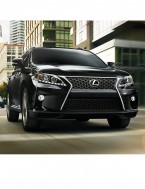
Replacing the oxygen sensor – this task sounds easy.
For some cars this is actually an easy job. But for some it isn’t. Take this Audi A6 for example, the two red arrows point to the two oxygen sensors on its left exhasut manifold (the right manifold has another 2, too).
Now please use your imagination: without disassembling the engine like what it shows in the photo, and with the cylinder head blocking your space (you can use the right hand side cylinder in the above photo as comparison), are you able to reach the sensor and take it out, then install a new one? For other people I am not sure, but I know I cannot.
Read More








Recent Comments